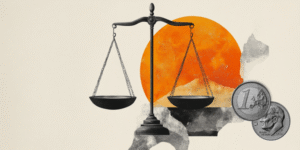UnitedHealth (NYSE:UNH) experienced a significant 18% stock plunge on Tuesday, May 13th, following the company’s announcement that CEO Andrew Witty would step down for ‘personal reasons.’ Simultaneously, UnitedHealth Group suspended its 2025 financial forecast, citing increased medical costs. This sharp decline compounds recent pressure on UNH stock, which has now fallen by a substantial 50% over the past month. This downward trend was initially fueled by the company’s underwhelming Q1 results and outlook.
Given this dramatic 50% drop, the key question is whether UNH stock now presents a buying opportunity. Our analysis suggests that UNH stock appears attractive and represents a potentially favorable buying opportunity at its current price of approximately $310. While acknowledging some minor concerns, we believe the stock’s current valuation appears low relative to its intrinsic value.
Our conclusion is based on a comparative analysis of UNH stock’s present valuation against its historical operating performance and its current and past financial health. Evaluating UnitedHealth across key dimensions—Growth, Profitability, Financial Stability, and Downturn Resilience—reveals a company with robust operating performance and a strong financial condition, as elaborated below.
However, for investors who seek lower volatility than individual stocks, the Trefis High-Quality portfolio presents an alternative – having outperformed the S&P 500 and generated returns exceeding 91% since its inception. Separately, see – Drug Price Regulations: Is Pfizer Stock A Buy Or Sell?
How Does UnitedHealth’s Valuation Look vs. The S&P 500?
Going by what you pay per dollar of sales or profit, UNH stock looks cheap compared to the broader market.
- UnitedHealth has a price-to-sales (P/S) ratio of 0.9 vs. a figure of 2.8 for the S&P 500
- Additionally, the company’s price-to-free cash flow (P/FCF) ratio is 15.5 compared to 17.6 for S&P 500
- And, it has a price-to-earnings (P/E) ratio of 26.1 vs. the benchmark’s 24.5
How Have UnitedHealth’s Revenues Grown Over Recent Years?
UnitedHealth’s Revenues have seen notable growth over recent years.
- UnitedHealth has seen its top line grow at an average rate of 11.7% over the last 3 years (vs. an increase of 6.2% for S&P 500)
- Also, its quarterly revenues grew 9.8% to $110 Bil in the most recent quarter from $100 Bil a year ago (vs. 4.9% improvement for S&P 500)
How Profitable Is UnitedHealth?
UnitedHealth’s profit margins are much worse than most companies in the Trefis coverage universe.
Does UnitedHealth Look Financially Stable?
UnitedHealth’s balance sheet looks fine.
- UnitedHealth’s Debt figure was $81 Bil at the end of the most recent quarter, while its market capitalization is $286 Bil (as of 5/13/2025). This implies a moderate Debt-to-Equity Ratio of 28% (vs. 21.5% for S&P 500). [Note: A low Debt-to-Equity Ratio is desirable]
- Cash (including cash equivalents) makes up $34 Bil of the $310 Bil in Total Assets for UnitedHealth. This yields a moderate Cash-to-Assets Ratio of 11% (vs. 15.0% for S&P 500)
How Resilient Is UNH Stock During A Downturn?
UNH stock has been more resilient than the benchmark S&P 500 index during some of the recent downturns. Worried about the impact of a market crash on UNH stock? Our dashboard How Low Can UnitedHealth Stock Go In A Market Crash? has a detailed analysis of how the stock performed during and after previous market crashes.
Inflation Shock (2022)
- UNH stock fell 17.2% from a high of $546.01 on 20 April 2022 to $452.06 on 17 June 2022, vs. a peak-to-trough decline of 25.4% for the S&P 500
- The stock fully recovered to its pre-Crisis peak by 16 August 2022
- Since then, the stock has increased to a high of $625.25 on 11 November 2024 and currently trades at around $310.
Covid Pandemic (2020)
- UNH stock fell 36.2% from a high of $305.31 on 19 February 2020 to $194.86 on 23 March 2020, vs. a peak-to-trough decline of 33.9% for the S&P 500
- The stock fully recovered to its pre-Crisis peak by 1 June 2020
Global Financial Crisis (2008)
- UNH stock fell 72.4% from a high of $58.99 on 21 December 2007 to $16.30 on 20 November 2008, vs. a peak-to-trough decline of 56.8% for the S&P 500
- The stock fully recovered to its pre-Crisis peak by 2 April 2012
Putting All The Pieces Together: What It Means For UNH Stock
In summary, UnitedHealth’s performance across the parameters detailed above is as follows:
– Growth: Very Strong
– Profitability: Very Weak
– Financial Stability: Neutral
– Downturn Resilience: Very Strong
– Overall: Neutral
Considering its strong performance across the key parameters of Growth, Profitability, Financial Stability, and Downturn Resilience, coupled with its currently low valuation, UNH stock appears attractive. This reinforces our conclusion that UNH presents a favorable buying opportunity.
Undoubtedly, risks exist, with the most significant being the elevated medical costs and their potential impact on the company’s short-term profitability. However, we believe this concern is already largely reflected in the stock’s current price. In our view, the 50% correction was an overreaction.
Regarding the CEO transition, it’s important to note that Andrew Witty will be succeeded by Stephen Hemsley, who has served as UnitedHealth Group’s CEO from 2006 to 2017 and has been with the company since 1997, overseeing its significant growth into a major health conglomerate. This suggests a degree of continuity and experience at the leadership level.
While UNH stock looks promising, investing in a single stock can be risky. On the other hand, the Trefis High Quality (HQ) Portfolio, with a collection of 30 stocks, has a track record of comfortably outperforming the S&P 500 over the last 4-year period. Why is that? As a group, HQ Portfolio stocks provided better returns with less risk versus the benchmark index; less of a roller-coaster ride, as evident in HQ Portfolio performance metrics.
Read the full article here















